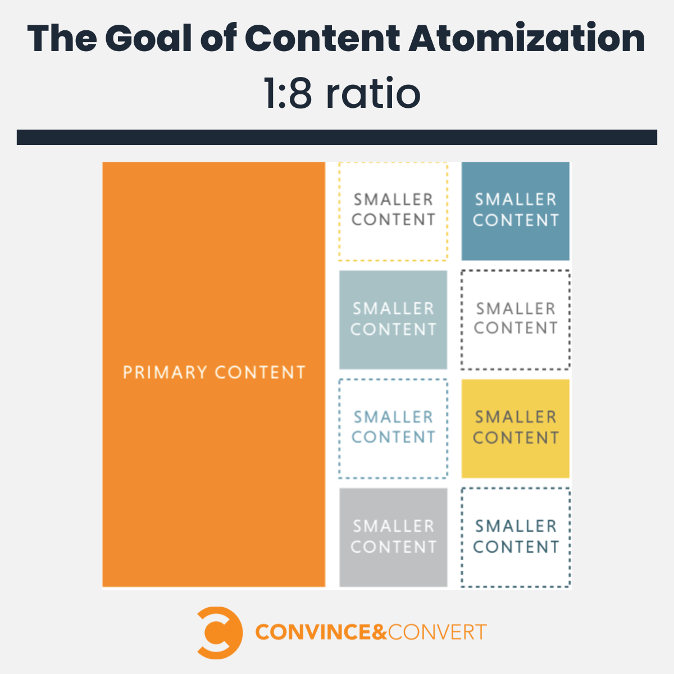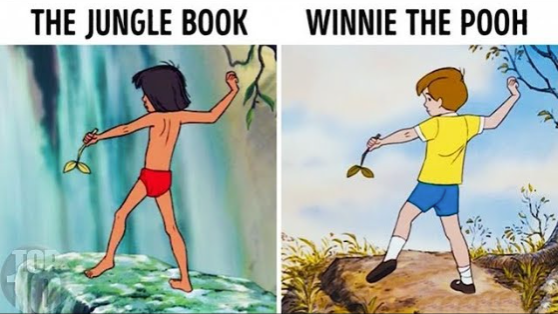
When I was in elementary school, we occasionally had special assemblies where troupes of high-energy adults would come through to present “educational entertainment” (if you ever need a good example of an oxymoron, there you have it).
One particular time, a group came bopping onto the stage in all green outfits chanting, “Reduce! Reuse! Recycle! Yeah! Reduce! Reuse! Recycle! Yeah!” Their aggressive arm flapping and ear cupping signaled to the audience to join in.
That’s about all I remember from that event repeating the planet-saving mantra over and over. Maybe the folks on stage (probably satisfying a community service sentence by teaching third graders about sustainability) knew about the marketing rule of seven. I doubt it, but maybe, because the chant has been living rent-free in my head for decades.
One Touch Isn’t Enough
The marketing rule of seven, developed in the 1930s, helped us to understand that prospects need to be exposed to a message at least seven times before they will be moved to act. Now, fast forward to 2024 and marketers reasonably expect that number to be higher since they’re competing against way more noise in digital channels. More touchpoints mean more content and assets to power them.
“If your institutions are anything like mine, the demand for assets just grows and grows and grows, especially in the digital era,” waxes Florida Tech’s Director of Creative Services and Brand Management Christena Callahan in a recent Lytho case study.
With demand skyrocketing, marketers must work smarter and prioritize optimization of every asset created. Deliverables can’t serve a single purpose. They need to be reusable.
For example, a case study can’t just be posted on a company’s website. It needs to be atomized and boiled down to a handful of succinct summaries for a series of social posts. It should be combed for meaningful stats and trends that can be shared visually as an infographic. An adjacent blog post could be published, and a webinar could be recorded and that webinar could be broken into snippets for further social posts and emails.
Source: Convince & Convert
To achieve marketing success today, every asset should be created with the intent of being recyclable for reuse.
The Ancient Art of Asset Recycling
Asset recycling isn’t a new concept. Making the social media rounds from time to time are viral videos exposing the same animation sequence used in different Disney movies, showing how their studio animators recycled assets and patterns.
The practice may be interpreted as lazy or unimaginative. On the contrary, for Disney recycling work was about replicating a successful formula to maximize efficiency, consistency, and outcomes.
Source: Top 10s
Don’t be like Disney in every way, but the strategy of reusing excellent work is advisable. Here are a few tips for integrating asset recycling into your content strategies.
Make Recycling Easy
A joint survey by the World Economic Forum, SAP, and Qualtrics found that 94% of Americans support recycling (in the traditional sense: paper, plastic, glass, etc.) but only 34% do it. The no. 1 reason why Americans don’t recycle: Lack of convenient access.
Asset recycling depends on good asset management in a DAM. Teams need an easy-to-navigate repository of assets so the good stuff can be found and reused. If a designer spends more than a few minutes trying to find an asset, waste is already bloating what should have been a time-saving strategy.
DAM features like tags, custom metadata fields, copyright/usage rights, and filters enable users to quickly find exactly what they need (or quickly discover that it doesn’t exist) and ensure they’re using it appropriately.
Further, being able to store versions and variants of native work make what’s available obvious to keep popular, success work in circulation.
Recycling Is a Collective Action, Part I
Successfully recycling assets also relies on collaboration between the marketing and creative teams. When marketing identifies existing work that can be refreshed to serve a new purpose, it’s time to involve the creative team to tackle the updating.
The request intake system should provide on-asset collaboration, like Lytho’s Request File Markup. Through on-asset collaboration, requesters can clearly and accurately communicate their needs to the creative team by marking up files instead of abstractly describing changes in text fields or needing to schedule a meeting.
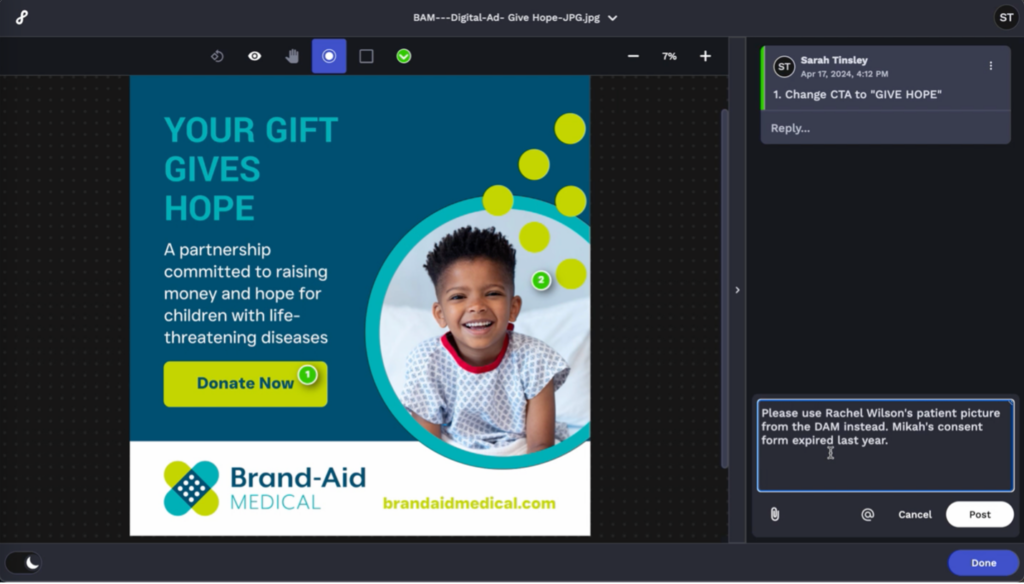
On-asset collaboration in Lytho’s Request File Markup
On-asset collaboration reduces overall production time and the number of versions necessary to produce the final deliverable, both of which are efficiency metrics. And recycling assets is all about efficiency.
Recycling Is a Collective Action, Part II
Efficiency gets a steroid-like boost when a self-service creative automation tool is an integral piece of the content recycling strategy. Including a templating tool in the tech stack allows marketers to anticipate and prepare for future use cases of assets during campaign development. So instead of requesting updates to existing assets after a campaign’s initial launch, marketers are collaborating with the creative team during asset production to create a template that can produce new versions of the original.
Templating tools, like Lytho’s Tempo, help creative teams serve up easy-to-use, always-on-brand templates that empower marketers to create the assets they need the moment they need them. Enabling non-designers to take an active role in asset creation maximizes speed to market.
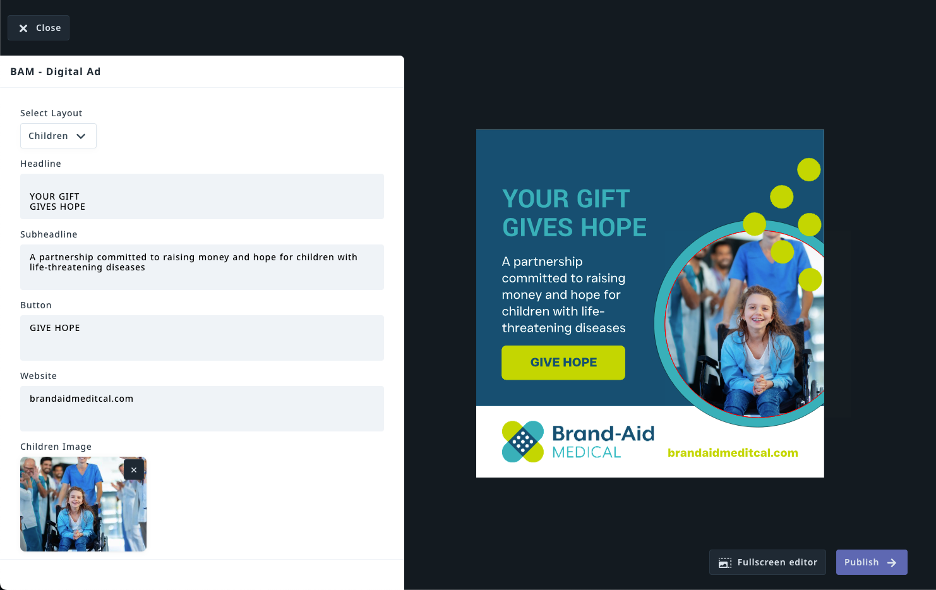
Lytho’s creative automation templating tool Tempo
For example, the need for personalized messaging is just as important as frequency of messaging to today’s consumer. According to Segment.io, 69% of polled customers want a personalized and consistent experience across multiple channels. Personalization multiplies demand exponentially because it requires multiple versions of an initial concept.
Templates address the personalization challenge head on, all while encouraging the recycling of existing work. Not only do they provide consistent, recognizable assets, the same template can be reused countless times to deliver unique messages to target audiences.
Don’t Recreate the Wheel — Recycle It
Wolfgang Reitherman, a core Disney animator in the 1950s, worked on classic movies like Sleeping Beauty, The Jungle Book, The Sword in the Stone, Winnie the Pooh, 101 Dalmatians, and more. Through his experience, Reitherman knew what imagery delighted audiences, so he adopted the practice of recycling work that proved to please. Hence, the borrowed animation patterns referenced earlier.
Marketers need to identify their most successful assets and lean into that work to quickly reinforce the positive results initially generated, like the marketing rule of seven says.
Asset tracking technology is gaining traction as a must-have DAM feature because it helps marketing teams understand which digital asset are (and aren’t) effective once deployed online. Once a successful sequence is established, milk it again by recycling the campaign.
Asset recycling – much like recycling paper, metal, glass, etc. is easier said than done. It needs to be a mindset, and it needs to have a strategy. But the benefits will make teams smarter and stronger.
Conga CMO Andrew Bennett wrote in May 2023, “Despite [economic] uncertainty, marketing teams’ workloads show no signs of slowing down. Keeping up with this demand while being able to quickly adapt to change is no easy feat – but the teams that can do so will ultimately come out stronger.”
On this Earth Day 2024, consider how your company and team can invest in asset recycling to save time, energy, and resources by finding new uses for existing assets.
Do you want to give yourself and your creative team more room for creative stimulation by automating the boring stuff? Lytho helps you streamline your entire workflow and harmonize all brand collateral under a single, uniform platform. Feel free to reach out to us by scheduling a demo and learning how our creative solutions can boost the effectiveness of your creative projects. We look forward to speaking with you!
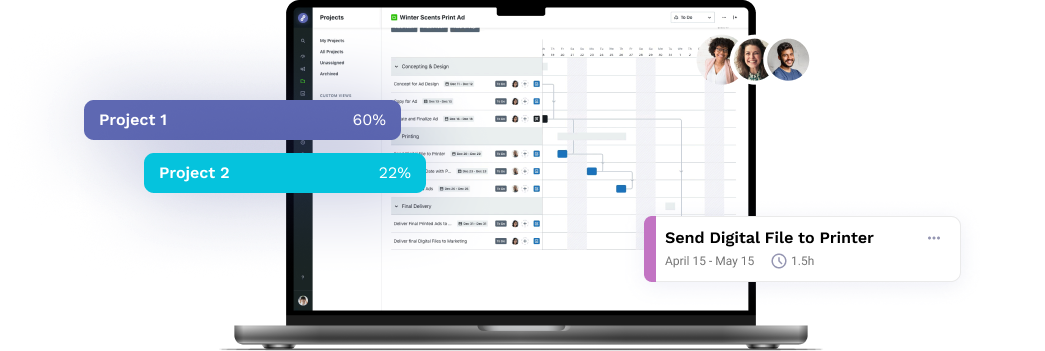
Ready to simplify your creative operations and start having a little fun at work again? Schedule time to talk with us.
Let us show you how Lytho’s Creative Operations Platform helps in-house creative and marketing teams do better work, ease the stakeholder experience, and stay on brand.
Schedule a Demo
